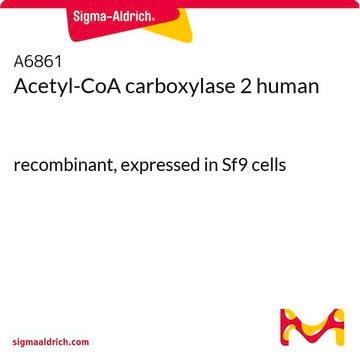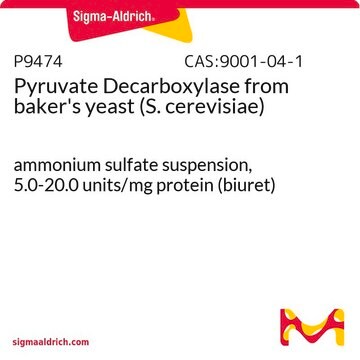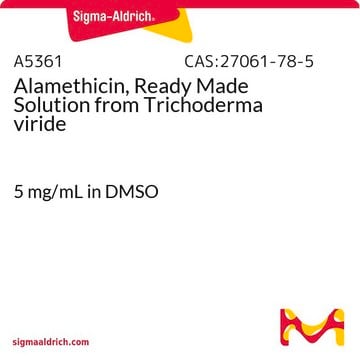A6986
Acetyl-CoA Carboxylase 1 human
recombinant, expressed in Sf9 cells
Sinonimo/i:
ACAC, ACACA, ACC, ACC1, ACCA, acetyl-CoA carboxylase alpha
About This Item
Prodotti consigliati
Descrizione generale
Applicazioni
Azioni biochim/fisiol
The Acetyl-CoA Carboxylase enzymes are activated by citrate, glutamate, and dicarboxylic acids and negatively regulated by long and short chain fatty acyl CoAs. Acetyl-CoA Carboxylase 1 is essential for breast cancer and prostrate cancer cell survival. Because of thier roles in fatty acid metabolism and oxidation, ACACA and ACACB are therapeutic targets for treating obesity and metabolic syndrome disorders.
Proprietà fisiche
Definizione di unità
Nota sulla preparazione
Codice della classe di stoccaggio
12 - Non Combustible Liquids
Classe di pericolosità dell'acqua (WGK)
WGK 1
Punto d’infiammabilità (°F)
Not applicable
Punto d’infiammabilità (°C)
Not applicable
Certificati d'analisi (COA)
Cerca il Certificati d'analisi (COA) digitando il numero di lotto/batch corrispondente. I numeri di lotto o di batch sono stampati sull'etichetta dei prodotti dopo la parola ‘Lotto’ o ‘Batch’.
Possiedi già questo prodotto?
I documenti relativi ai prodotti acquistati recentemente sono disponibili nell’Archivio dei documenti.
Articoli
Fatty acid synthesis supports cancer cell proliferation, essential for membrane generation, protein modification, and bioenergetics.
Il team dei nostri ricercatori vanta grande esperienza in tutte le aree della ricerca quali Life Science, scienza dei materiali, sintesi chimica, cromatografia, discipline analitiche, ecc..
Contatta l'Assistenza Tecnica.








